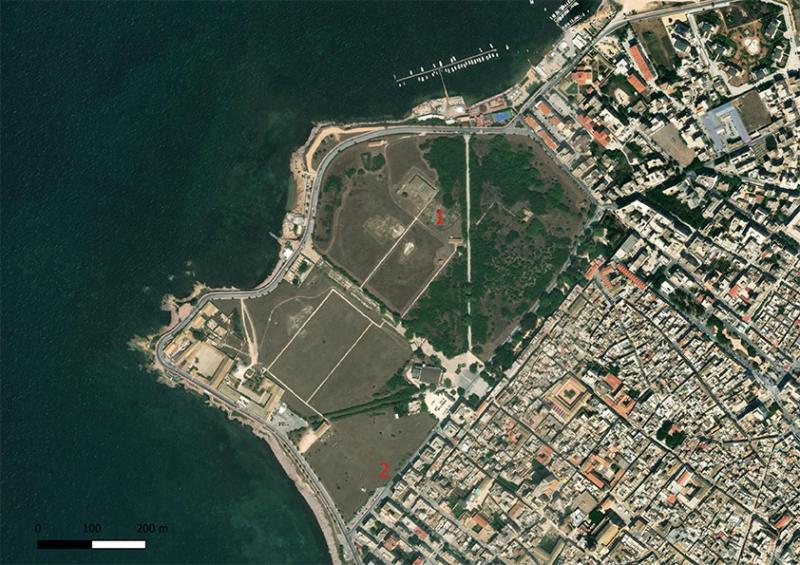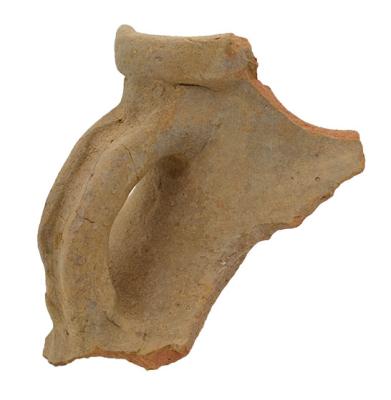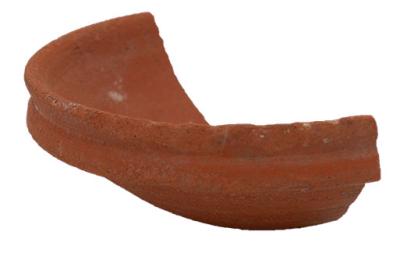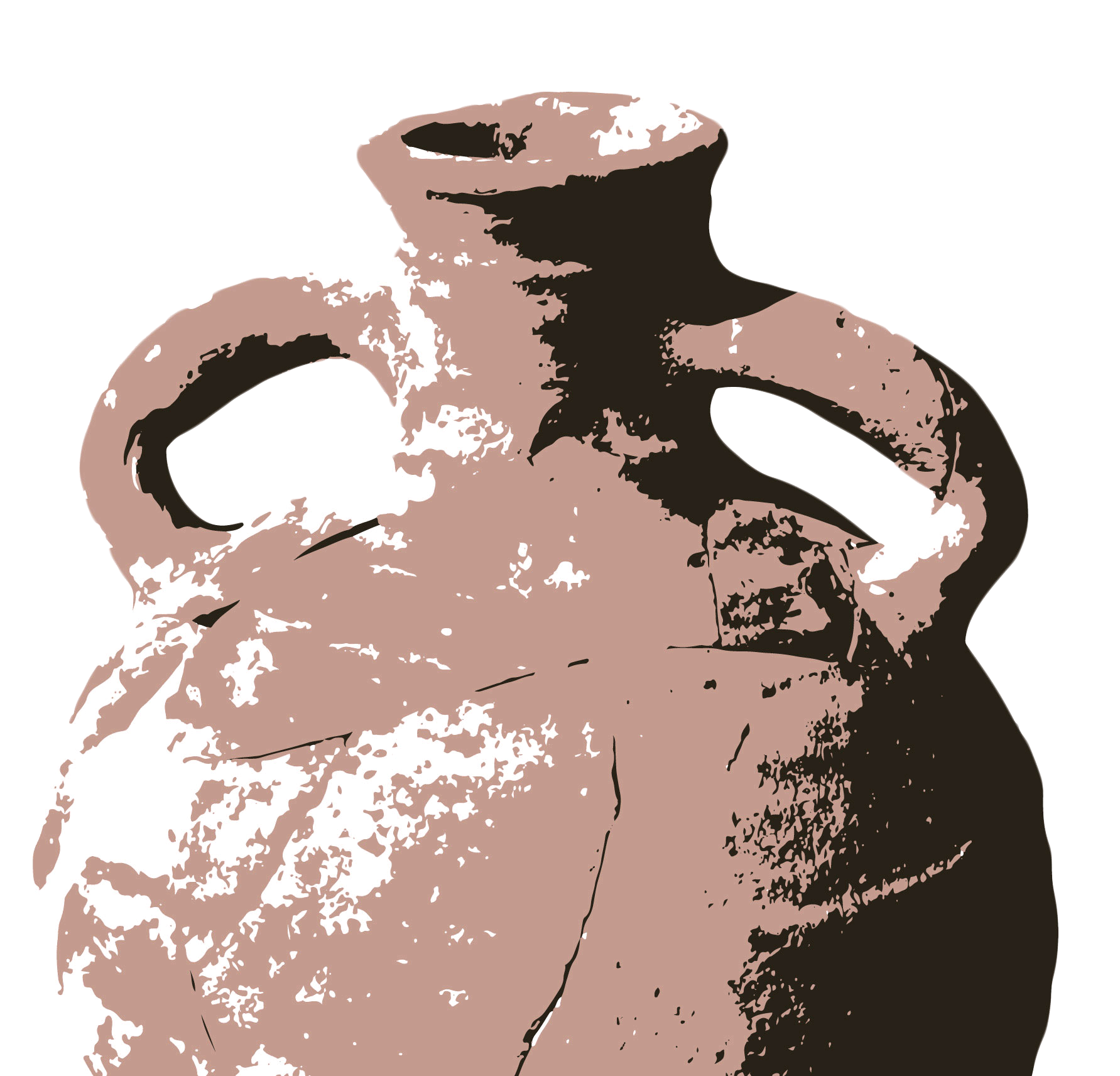
Lilybaeum holds the western cusp of Sicily (Capo Boeo), and its natural position offers excellent control over the Mediterranean Channel. It was one of the main towns of Roman Sicily, so much so that it got the title of Colonia in the 3rd century AD. However, its history during late antiquity and the Middle Ages remains obscure. Lilybaeum probably suffered some vandal incursion and plundering during the 5th century. It was still a fortress in the 6th century despite Procopius stressing its low value. Approximately in 500 AD, Lilybaeum was part of the Vandal kingdom after the union between Thrasamund and Amalafrida. In 533, after the defeat of the Vandals in Africa, Belisarius claimed it as part of Constantinople's legitimate domains. It is common knowledge that part of the previous Punic and Roman urban network felt abandoned between Late Antiquity and the early Middle Ages, notably along the North-West shore. Indeed, there is evidence of 5th-century violent destructions, and public and private spaces underwent even more pronounced transformations in the following centuries. However, revising the 1972-1978 excavations at Capo Boe (Domus della Venatio and Insulae II-III) suggests a prolonged life continuity and highlights a vital economy opened to the major trade flows.
Capo Boeo: Insula III
Insula III constitutes a residential block in the Northeast of Capo Boeo. C.A. Di Stefano excavated it in 1972 for the first time, then in 1977, 1978, 1986, and 1988. The investigations resulted in the discovery of several rooms belonging to private dwellings. One is a small bath suite furbished with an apsidal heated room, whose floor preserved a white mosaic and the hypocaust with its stacks of bricks. The small bath probably dates to the 4th century AD and obliterated the previous structures. Indeed, the whole area underwent remodeling and transformation before its traumatic destruction in the late 4th-5th century. However, we now dispose of fresh data hinting that life in Insula III lasted until the early Middle Ages.

Capo Boeo: Domus della Venatio

The discovery of this wealthy house dates to 1972. At that time, C.A. Di Stefano investigated an area of Capo Boeo near the Church of St. Giovanni. One of the test pits close to Viale Isonzo yielded walls and two mosaic floors belonging to a late Roman dwelling. One depicted a hunting, so the house was named Domus della Venatio. Thick burning levels covering the floors suggested a sudden and violent destructive event that led the house to its ruin in the 5th century. However, many find hints about a more prolonged occupation of the site.

Bibliography:
- Caliri, E. (2007), Lilibeo tra Vandali, Goti e Bizantini, Mediterraneo Antico 10, 1-16.
- Di Stefano, C.A. (1973), Nuove scoperte archeologiche a Marsala. Le fortificazioni puniche di Lilibeo, Sicilia Archeologica 21-22, 71-79.
- Di Stefano, C.A. (1976), Marsala. Ricerche archeologiche al Capo Boeo, Sicilia Archeologica 32, 25-31. https://www.trapaninostra.it/libri/Ente_Provinciale_Turismo_Trapani/Sicilia_Archeologica_1976_32_Dicembre/Sicilia_Archeologica_1976_32_Dicembre-02.pdf
- Di Stefano, C.A. (1976-1977), Marsala: scoperte archeologiche effettuate negli anni 1972-1976, Kokalos 22-23, II.2, 761-774.
- Di Stefano, C.A. (1980), Lilibeo alla luce delle nuove scoperte archeologiche, Sicilia Archeologica 43, 7-20. https://www.trapaninostra.it/libri/Ente_Provinciale_Turismo_Trapani/Sicilia_Archeologica_1971_14_Giugno/Sicilia_Archeologica_1971_14_Giugno-05.pdf
- Di Stefano, C.A. (1984), Fase romana imperiale, in C.A. Di Stefano (ed), Lilibeo. Testimonianze archeologiche dal IV sec. A.C. al V sec. D.C., Marsala, Chiesa del collegio, dal 3 dicembre 1984, Palermo: Regione Siciliana, 134-137
- Di Stefano, C.A. (2002), La Sicilia occidentale fra il IV e il V secolo d.C.: il contributo della ricerca archeological, in Crociata, M. and Griffo, M.G. (eds), Pascasino di Lilibeo e il suo tempo. A 1550 anni dal Concilio di Calcedonia (Storia e cultura di Sicilia 11), Caltanissetta: Sciascia, 68-89.
- Giglio, R. (2020), Da Lilibeo a Marsala: note sulla trasformazione dello spazio urbano, in L. Arcifa and M. Sgarlata (eds.), From Polis to Madina. La trasformazione delle città siciliane Tra Tardoantico e Altomedioevo (Themata), Bari: Edipuglia, 297-311.
- Palazzo, P. and Vecchio, P. (2013), Il decumano Massimo di Lilibeo: ipotesi di periodizzazione di un settore urbano della città antica, in Epigrafia e territorio. Politica e società. Temi di antichità romane IX (Documenti e studi 54), Bari: Edipuglia, 135-170.
We are grateful to Parco archeological di Lilibeo-Marsala for granting authorization to carry out new investigations on Capo Boeo
